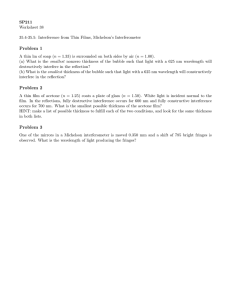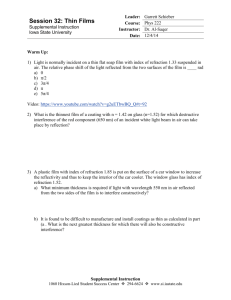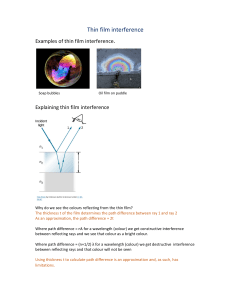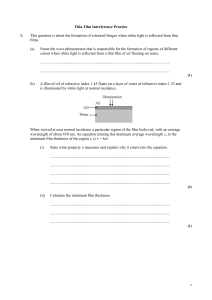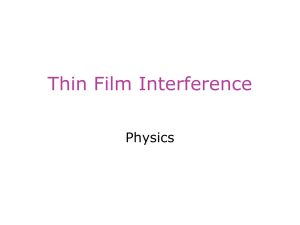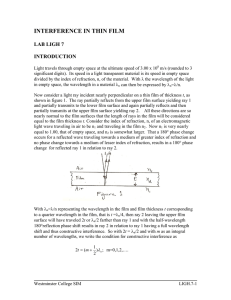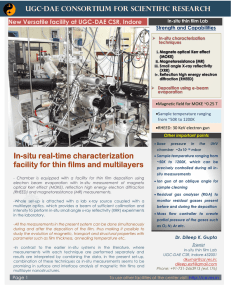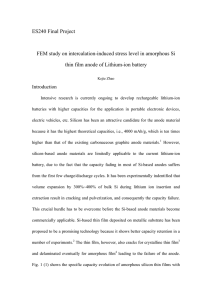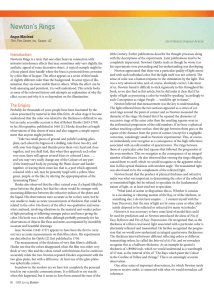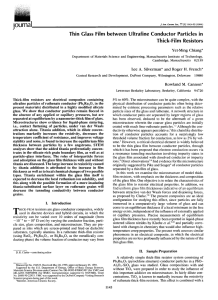Homework Set 34C PH 113 – 10
advertisement
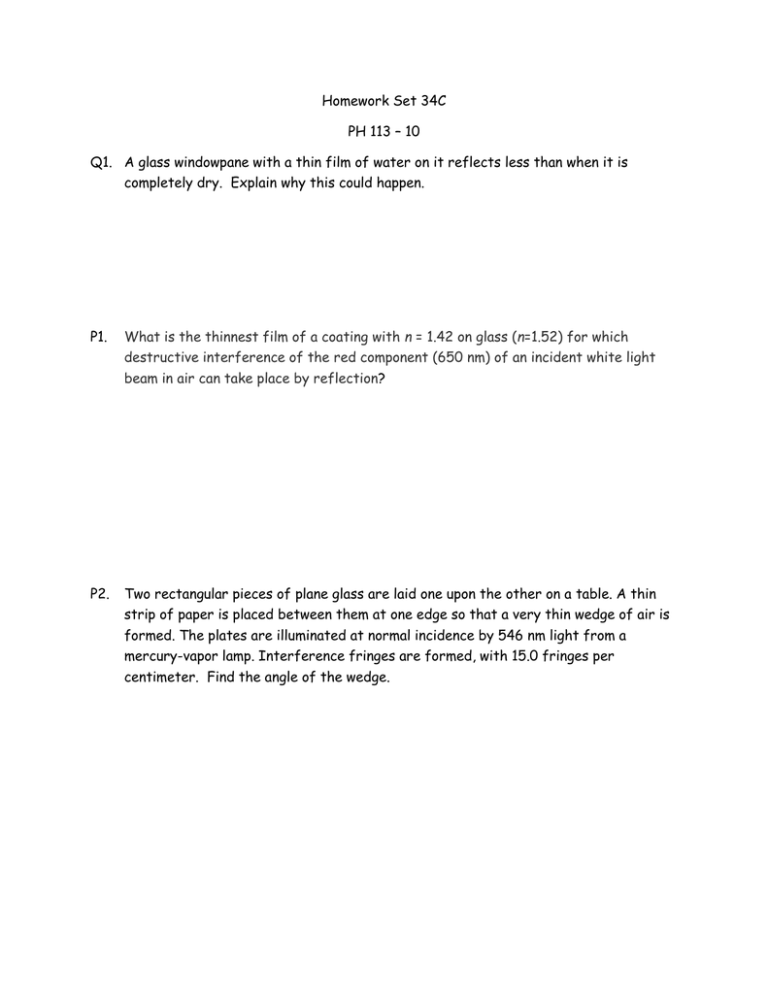
Homework Set 34C PH 113 – 10 Q1. A glass windowpane with a thin film of water on it reflects less than when it is completely dry. Explain why this could happen. P1. What is the thinnest film of a coating with n = 1.42 on glass (n=1.52) for which destructive interference of the red component (650 nm) of an incident white light beam in air can take place by reflection? P2. Two rectangular pieces of plane glass are laid one upon the other on a table. A thin strip of paper is placed between them at one edge so that a very thin wedge of air is formed. The plates are illuminated at normal incidence by 546 nm light from a mercury-vapor lamp. Interference fringes are formed, with 15.0 fringes per centimeter. Find the angle of the wedge. P3. A plastic film with index of refraction 1.85 is put on the surface of a car window to increase the reflectivity and thus to keep the interior of the car cooler. The window glass has index of refraction 1.52. (A) What minimum thickness is required if light with wavelength 550 nm in air reflected from the two sides of the film is to interfere constructively? (B) It is found to be difficult to manufacture and install coatings as thin as calculated in part (A). What is the next greatest thickness for which there will also be constructive interference? P4. What is the thinnest soap film (excluding the case of zero thickness) that appears black when illuminated with light with a wavelength of 480 nm? The index of refraction of the film is 1.33, and there is air on both sides of the film.
